- Home
- Alexandre Dumas
Three Musketeers (Barnes & Noble Classics Series) Page 4
Three Musketeers (Barnes & Noble Classics Series) Read online
Page 4
This passage first bows to and then plays against the fainting scene that novelists so often assign to a woman who has been affronted or abandoned by her lover.27 It immediately dismisses the notion that Milady is, after all, a typically weak female and insists instead on “her iron will” (p. 413).28 It also prepares and makes plausible her aggressive reaction, in chapter 37, to D‘Artagnan’s discovery of the fleur de lis branded on her shoulder. On that occasion, the narrator tells us, “She turned upon him, no longer like a furious woman, but like a wounded panther” and, taking in hand “a small poniard ... threw herself with a bound upon D’Artagnan” (p. 417).29 Of course, the comparison of a violent woman to a wild beast is yet another cliché, but one that is perfectly logical and appropriate here given Milady’s well-established sense of self-preservation and her fierce determination to seek revenge against those who would dominate or insult her.30
It is, I think, no accident that Dumas gives Milady a “manlike soul in that frail and delicate body” (p. 558) or that, having killed off his villainess at the end of The Three Musketeers, he replaces her, in Twenty Years After, with a masculine double—her son, Mordaunt.31 If we are to believe in D‘Artagnan’s heroism, his intelligence, and his courage, the young man must have a worthy opponent against whom to test himself and in contrast to whom he can display his noble qualities.32 In The Three Musketeers, the contest between D’Artagnan and Milady is not about sex or social positioning. It is about politics, honor, and power. The conflict between these two characters begins, as we have seen, with their parallel efforts to recover the diamond studs Queen Anne gave to Buckingham. That event establishes once and for all the rivalry and the antithetical equivalence between the valorous, if inexperienced, youth and the perfidious, perceptive, and cunning woman. It also leads, with an inexorable sureness born of Dumas’s narrative skill, to their final confrontation on the banks of the River Lys and to D‘Artagnan’s charitable tears.33 I would argue, in fact, that it is because we are as fully persuaded of Milady’s villainy and egotism as we are of D’Artagnan’s decency and courage that we continue to read, believe in, and be moved by this remarkable novel.
The Three Musketeers is not without its flaws and inconsistencies—D’ Artagnan is twice made a Musketeer, as if Dumas has forgotten having done this a first time, and the chronology is at times fuzzy. The book does, however, offer readers a wonderful tale of spirit and adventure, of character, honor, and humor. It is also an unforgettable paean to friendship. “All for one and one for all” is more than just a slogan; it is a pledge of support and mutual assistance, of caring and sharing the burdens and the joys of life. Born of conflict—D‘Artagnan is set to duel each of the three Musketeers—the relationship the young D’Artagnan forges with Athos, Porthos, and Aramis is vital to the success of his efforts to recover the diamond studs and to all his other undertakings. His three friends teach him lessons about life, love, dignity, integrity, sacrifice, commitment, and courage, but also about respect, indulgence, compassion, vanity, hypocrisy, and suffering. Their generosity is legendary and is both practical and selfless.34 When one has money, all share it if there is a need. When all have funds, each uses his purse as he sees fit. Personal skills, servants, and other relationships are likewise employed for the individual or the common good, as circumstances demand.
As closely tied as they are, however, each of these four men has his own personality, qualities, ambitions, and cares. Chapter 67 makes this clear one last time. Arrested at the behest of the Cardinal, D‘Artagnan is accompanied to Richelieu’s quarters by the same true friends who had escorted him on his journey to England. But, just as the final stages of that earlier trip were made alone, D’Artagnan must now confront the Cardinal on his own. The young man, harrowed by the death of his beloved Constance and by the execution of Milady, is convinced that he will be condemned to die, but he goes bravely forward. He hands Richelieu the carte blanche Athos had taken from Milady—it reads: “It is by my order and for the good of the state that the bearer of this has done what he has done. RICHELIEU” (p. 695)—but he does not expect to be spared punishment.
After a time, however, the Cardinal offers him, in exchange for that document, a lieutenant’s commission in the Musketeers with the name of the holder of that rank left blank. Later, D‘Artagnan offers the commission to each of his friends in turn. They all refuse it. Porthos will instead be married to his rich benefactress, who is now widowed; Aramis will enter holy orders; Athos will continue to drink and, for a time, to fight. It is Athos who finally writes D’Artagnan’s name on the commission. The promotion, which once would have brought D’Artagnan great joy, leaves him despondent.
“I shall then have no more friends,” said the young man. “Alas! nothing but bitter recollections.”
And he let his head sink upon his hands, while two large tears rolled down his cheeks.
“You are young,” replied Athos; “and your bitter recollections have time to change themselves into sweet remembrances” (p. 698).
Time may not heal all wounds, but neither time nor distance will diminish the friendship of these four men or the affection that readers feel for them all. D’Artagnan and Dumas have thrilled and enthralled people across generations and around the globe. There is a generosity of spirit and a wealth of human understanding in this book that will never go out of fashion. It therefore seems appropriate that, in 2002, on the two-hundredth anniversary of his birth, Dumas was reburied in the Pantheon, the monument to and final resting place of some of the foremost contributors to France’s history and cultural glory. New, wide-ranging studies of Dumas’s works have recently begun to appear and publication of his complete correspondence is planned for the near future.35 These, together with editions of his novels, plays, and other writings that are once more in print, should lead to a fuller and more richly nuanced understanding of and appreciation for the life and the genius of this multi-talented literary titan.
Barbara T. Cooper is Professor of French at the University of New Hampshire. She is a member of the editorial boards of Nineteenth-Century French Studies and the Cahiers Alexandre Dumas. She specializes in nineteenth-century French drama and in works by Dumas. Cooper was the editor of a volume on French dramatists from 1789 to 1914 that is part of the Dictionary of Literary Biography series and wrote the essay on Dumas in that volume. She has also coedited two volumes of essays on nineteenth-century French literature and culture, and is the author of more than fifty scholarly articles on works of nineteenth-century French literature, many of which focus on texts by Dumas. In 2002 she participated in several colloquia marking the bicentennial of Dumas’s birth. Cooper, who holds her Ph.D. from the University of Wisconsin-Madison, was named a Chevalier dans l’Ordre des Palmes Académiques by the French government in 1994 for her contributions to the promotion and propagation of French culture.
Dedicated to Wallace, my one for all.
NOTES TO INTRODUCTION
1. The most recent edition of the play is Alexandre Dumas, “La Jeunesse des Mousquetaires” suivi de “Les Mousquetaires” (edited by Jean-Baptiste Goureau; Paris: La Table Ronde, 1994). See, too, Michel Autrand, “Les Trois Mousquetaires au théâtre—La jeunesse des Mousquetaires,” in “Les Trois Mousquetaires, ” “Le Comte de Monte-Cristo”: Cent cinquante ans après (edited by Fernande Bassan and Claude Schopp; Marly-le-Roi, France: Editions Champflour, 1995, pp. 9-20).
2. For more information on the films and literary works based on Dumas’s novel, see Daniel Compere, D‘Artagnan & Cie: “Les Trois Mousquetaires” d’Alexandre Dumas, un roman a suivre (Paris: Encrage, 2002). The Internet Movie Database (www.imdb.com) provides a partial list of film adaptations. See also “Inspired by The Three Musketeers” on p. 709 of this edition.
3. Publisher and bookseller Jules Baudry published the first bound edition of The Three Musketeers in Paris in 1844.
4. See, for example, the following passages: “Then, as if to render an account to herself of the changes she could place upon h
er countenance, so mobile and so expressive, she made it take all expressions from that of passionate anger, which convulsed her features, to that of the most sweet, most affectionate, and most seducing smile” (p. 558) and “A light appeared under the door; this light announced the return of her jailers. Milady, who had arisen, threw herself quickly into the armchair, her head thrown back, her beautiful hair unbound and disheveled, her bosom half bare beneath her crumpled lace, one hand on her heart, and the other hanging down” (p. 559).
5. Indeed, in a number of French Romantic dramas, the term journée (day), which figures in the titles of chapters 52-56 here, was used as a substitute for the word “act.”
6. Consider chapter 52, which begins in the following, engaging manner:Let us return to Milady, whom a glance thrown upon the coast of France has made us lose sight of for an instant.
We shall find her still in the despairing attitude in which we left her, plunged in an abyss of dismal reflection—a dark hell at the gate of which she has almost left all hope behind, because for the first time she doubts, for the first time she fears (p. 556).
The chapter ends in a similarly captivating fashion, but on an emotionally opposite note that simultaneously brings closure to this episode and piques the reader’s curiosity about the next:“Weak or strong,” repeated Milady [to herself], “that man has, then, a spark of pity in his soul; of that spark I will make a flame that shall devour him....”
And Milady went to bed and fell asleep with a smile upon her lips. Anyone who had seen her sleeping might have said she was a young girl dreaming of the crown of flowers she was to wear on her brow at the next festival (p. 563).
7. The representation of life as a journey, a path to maturity that is fraught with endless dangers and opportunities, is an ancient literary trope that dates back at least to the story of Telemachus in Homer’s Odyssey. In eighteenth-century France, such tales existed in memoir or epistolary form (for example, Prévost’s Manon Lescaut or Choderlos de Laclos’s Dangerous Liaisons) with a particular emphasis on sexual initiation. Balzac (Old Goriot, Lost Illusions, Wild Ass’s Skin, etc.), Stendhal (The Red and the Black, The Charterhouse of Parma), and other authors of French realist fiction transformed the Bildungsroman in the nineteenth century, using the genre to explore social, political, economic, and cultural aspects of initiation into adulthood in a richly described setting.
8. Note the mock-heroic tenor of the narrator’s comments when, shortly thereafter, D‘Artagnan threatens to skewer the host, hostess, and servants at the Jolly Miller inn with his sword: “Unfortunately, there was one circumstance which created a powerful obstacle to the accomplishment of this threat; which was, as we have related, that his sword had been in his first conflict broken in two.... Hence it resulted that when D’Artagnan proceeded to draw his sword in earnest, he found himself purely and simply armed with a stump of a sword about eight or ten inches in length, which the host [earlier] had carefully placed in the scabbard. As to the rest of the blade, the master [of the inn] had slyly put that on one side to make himself a larding pin” (p. 24). The impulsiveness the young man displays here will slowly disappear over time and by the end of the novel he will act with greater maturity and more careful reflection.
9. Because England and France were often at war with one another, the queen’s affection for Buckingham would be viewed as treasonous as well as adulterous.
10. For more on this episode, see the article by Ora Avni, ‘The Semiotics of Transactions: Mauss, Lacan, and The Three Musketeers“ (MLN 100:4 [September 1985]: pp. 728-757).
11. The classic study of Scott’s influence in France is Louis Maigron, Le Roman historique à l’époque romantique; essai sur [‘influence de Walter Scott (Paris: Hachette, 1912). For information on how Scott’s novels were received in France, see Klaus Massmann, Die Rezeption der historichen Romane Sir Walter Scott in Frankreich (1816-1832) (Heidelberg: C. Winter, 1972).
12. The text of this play was published for the first time in Alexandre Dumas, Théâtre complet (edited by Fernande Bassan; Paris: Lettres Modernes/Minard, 1974, vol. 1, pp. 73-144). Composer Hector Berlioz’s Waverly Overture offers another, more famous example of Scott’s popularity in France.
13. For more detail on Dumas’s sources, correspondence related to the novel, and the text of a surviving fragment of Maquet’s draft of part of the novel, see Claude Schopp’s preface to Dumas’s Les Trois Mousquetaires/Vingt Ans aprés (Paris: Robert Laffont, 1991, pp. iii-xxiii, and the documents section, pp. 1,281—1,364).
14. See, for example, the statement the narrator makes regarding the battle between French and English forces over the Ile de Ré (situated opposite the port city of La Rochelle), ”As it is not our intention to give a journal of the siege, but on the contrary only to describe such of the events of it as are connected with the story we are relating, we will content ourselves with saying in two words that the expedition succeeded, to the great astonishment of the king and the great glory of the cardinal“ (p. 468). Some critics have made much of Dumas’s chronological and historical inaccuracies. While it is true that Dumas does not always respect fact in this novel, he does seem to have captured the spirit of the age and, for his purposes, that is surely more important.
15. Since The Three Musketeers is a serial novel, the temporary deferral of the explanation of the event underway and the lengthy flashback that takes its place has economic as well as literary value. On the one hand, the inserted material provides important background information about the young man and, by diverting attention from the initial narrative thread, creates suspense. On the other hand, it also allows for the physical expansion of the text and thus helps the author to satisfy his contractual obligation to provide a specified quantity of words or lines of text.
16. On several occasions in the novel, Dumas indicates that minor events and/or private conflicts can have a significant impact on national or international affairs.
17. Christophe Miller has studied the role of inns in his article ”Les Auberges dans la trilogie des Mousquetaires” in “Les Trois Mousquetaires”, “Le Comte de Monte-Cristo”: Cent cinquante ans après (edited by Fernande Bassan and Claude Schopp; Marly-le-Roi, France: Editions Champflour, 1995, pp. 45—49)- It is important to note that until late in the book, D’Artagnan is not yet a Musketeer and would not necessarily serve alongside his friends. Meals are an occasion on which they could plausibly meet.
18. See Dumas on Food: Selections from “Le Grand Dictionnaire de cuisine” (translated by A. and J. Davidson; Oxford and New York: Oxford University Press, 1987). The most recent French edition is Alexandre Dumas, Grand Dictionnaire de cuisine (Paris: Phébus, 2000).
19. See Alexandre Dumas, Pauline (edited by Anne-Marie Callet-Bianco; Paris: Editions Gallimard, 2002).
20. Consider the following description:At length after a journey of nearly an hour, the carriage stopped before an iron gate, which closed an avenue leading to a castle severe in form, massive, and isolated. Then, as the wheels rolled over a fine gravel, Milady could hear a vast roaring, which she recognized at once as the noise of the sea dashing against some steep cliff.
The carriage passed under two arched gateways, and at length stopped in a court large, dark, and square....
[She] passed with [Felton] under a low arched door, which by a vaulted passage, lighted only at the farther end, led to a stone staircase around an angle of stone. They came to a massive door, which after the introduction into the lock of a key which the young man carried with him, turned heavily upon its hinges, and disclosed the chamber destined for Milady (pp. 534-535).
21. One recent exploration of this topic can be found in the article by Jacques Goimard, “La Bande des farceurs: l’humour dans Les Trois Mousquetaires,” in “Les Trois Mousquetaires, ” “Le Comte de Monte-Cristo”: Cent cinquante ans après (edited by Fernande Bassan and Claude Schopp; Marly-le-Roi, France: Editions Champflour, 1995, pp. 67-73).
22. . Indeed, Grimaud’s behavior here strikes me as reminiscent
of that of the alternately brave and timorous servant, Sosie, in Molière’s play Amphitryon (1668).
23. “After the soup the maid brought a boiled fowl—a piece of magnificence which caused the eyes of the [other] diners to dilate in such a manner that they seemed ready to burst.... The poor fowl was thin, and covered with one of those thick, bristly skins through which the teeth cannot penetrate with all their efforts. The fowl must have been sought for a long time on the perch, to which it had retired to die of old age.‘The devil!’ thought Porthos, ‘this is poor work. I respect old age but I don’t much like it boiled or roasted“’ (p. 373).
24. His mea culpa is expressed in terms that would be perfectly suited to the confessional (“I admit my patience failed me”), but are rather amusing coming from a man who, whatever his future plans, is currently a Musketeer. Note that the phrases ”throwing himself upon me” and “he let [my sword] pass through his body” grammatically diminish Aramis’s moral responsibility for wounding and/or killing his opponent. This would seem to be an attempt to cast his actions as a venial sin.
25. One of the most biased and racist critics was Eugène de Mire-court, Fabrique de romans: Maison Alexandre Dumas & Cie (Paris: Tous les marchands de nouveautés, 1845). Bernard Fillaire, in Alexandre Dumas et associés (Paris: Bartillat, 2002) follows in his footsteps. Gustave Simon, in Histoire d‘une collaboration: Alexandre Dumas et Auguste Maguet (Paris: G. Crès, 1919) gives an overly generous view of Maquet’s contributions. On Dumas’s father, see John G. Gallaher, General Alexandre Dumas: Soldier of the French Revolution (Carbondale: Southern Illinois University Press, 1997) and Claude Ribbe, Alexandre Dumas, le dragon de la reine (Monaco: Editions du Rocher, 2002).

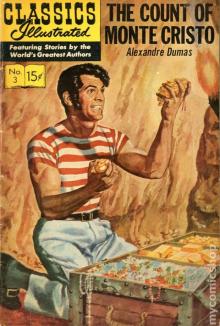 The Count of Monte Cristo, Illustrated
The Count of Monte Cristo, Illustrated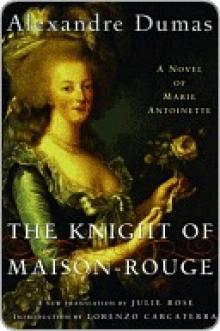 Knight of Maison-Rouge
Knight of Maison-Rouge![The Three Musketeers - Alexandre Dumas - [Full Version] - (ANNOTATED) Read online](http://i1.bookreadfree.com/14/the_three_musketeers_-_alexandre_dumas_-_[full_version]_-_annotated_preview.jpg) The Three Musketeers - Alexandre Dumas - [Full Version] - (ANNOTATED)
The Three Musketeers - Alexandre Dumas - [Full Version] - (ANNOTATED)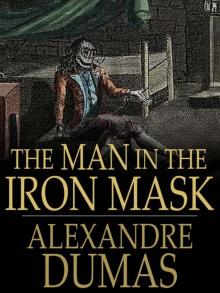 The Man in the Iron Mask
The Man in the Iron Mask The Count of Monte Cristo (Penguin Classics eBook)
The Count of Monte Cristo (Penguin Classics eBook)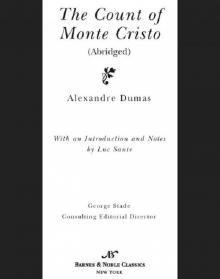 Count of Monte Cristo (abridged) (Barnes & Noble Classics Series)
Count of Monte Cristo (abridged) (Barnes & Noble Classics Series) The Women's War
The Women's War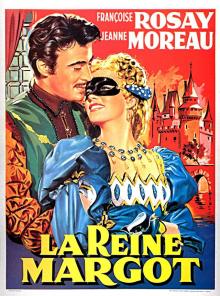 La reine Margot. English
La reine Margot. English The Vicomte de Bragelonne
The Vicomte de Bragelonne__english_preview.jpg) La dame aux camélias (Novel). English
La dame aux camélias (Novel). English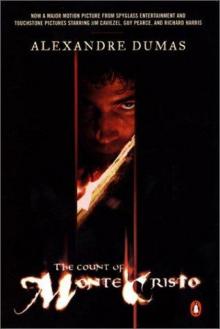 The Count of Monte Cristo
The Count of Monte Cristo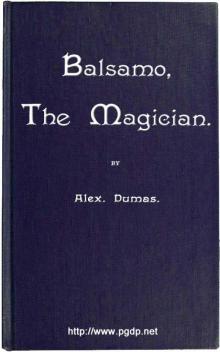 Balsamo, the Magician; or, The Memoirs of a Physician
Balsamo, the Magician; or, The Memoirs of a Physician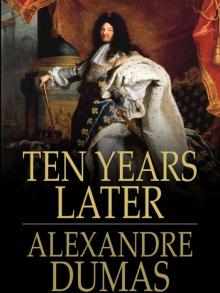 Ten Years Later
Ten Years Later The Romance of Violette
The Romance of Violette The Mesmerist's Victim
The Mesmerist's Victim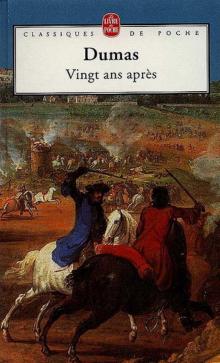 Vingt ans après. English
Vingt ans après. English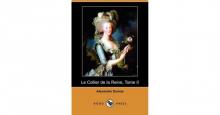 Le collier de la reine. English
Le collier de la reine. English Taking the Bastile; Or, Pitou the Peasant
Taking the Bastile; Or, Pitou the Peasant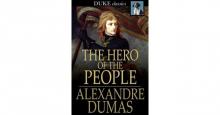 The Hero of the People: A Historical Romance of Love, Liberty and Loyalty
The Hero of the People: A Historical Romance of Love, Liberty and Loyalty Louise de la Valliere
Louise de la Valliere Les Quarante-cinq. English
Les Quarante-cinq. English Ange Pitou (Volume 1)
Ange Pitou (Volume 1)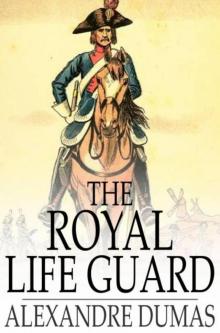 The Royal Life Guard; or, the flight of the royal family.
The Royal Life Guard; or, the flight of the royal family.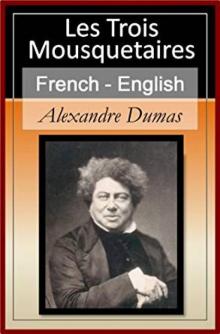 Les trois mousquetaires. English
Les trois mousquetaires. English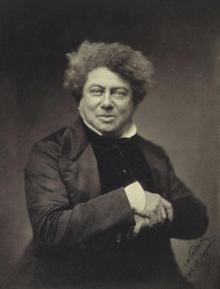 Une fille du régent. English
Une fille du régent. English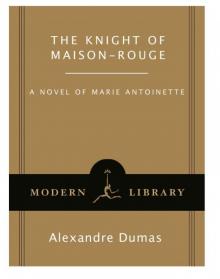 The Knight of Maison-Rouge
The Knight of Maison-Rouge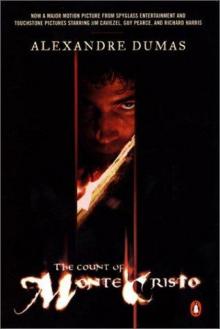 The Count of Monte Cristo (Unabridged Penguin)
The Count of Monte Cristo (Unabridged Penguin) Ange Pitou
Ange Pitou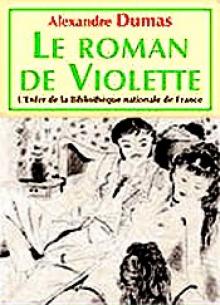 The Romance of Violette (vintage erotica)
The Romance of Violette (vintage erotica)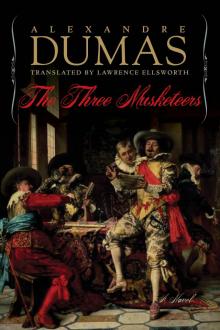 The Three Musketeers
The Three Musketeers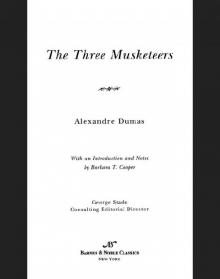 Three Musketeers (Barnes & Noble Classics Series)
Three Musketeers (Barnes & Noble Classics Series)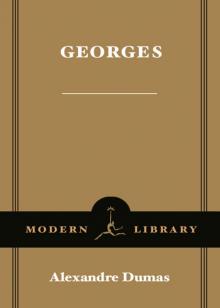 Georges
Georges Man in the Iron Mask (Barnes & Noble Classics Series)
Man in the Iron Mask (Barnes & Noble Classics Series)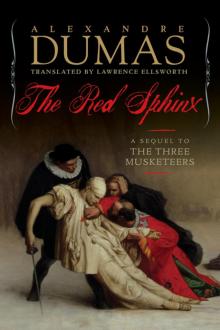 The Red Sphinx
The Red Sphinx